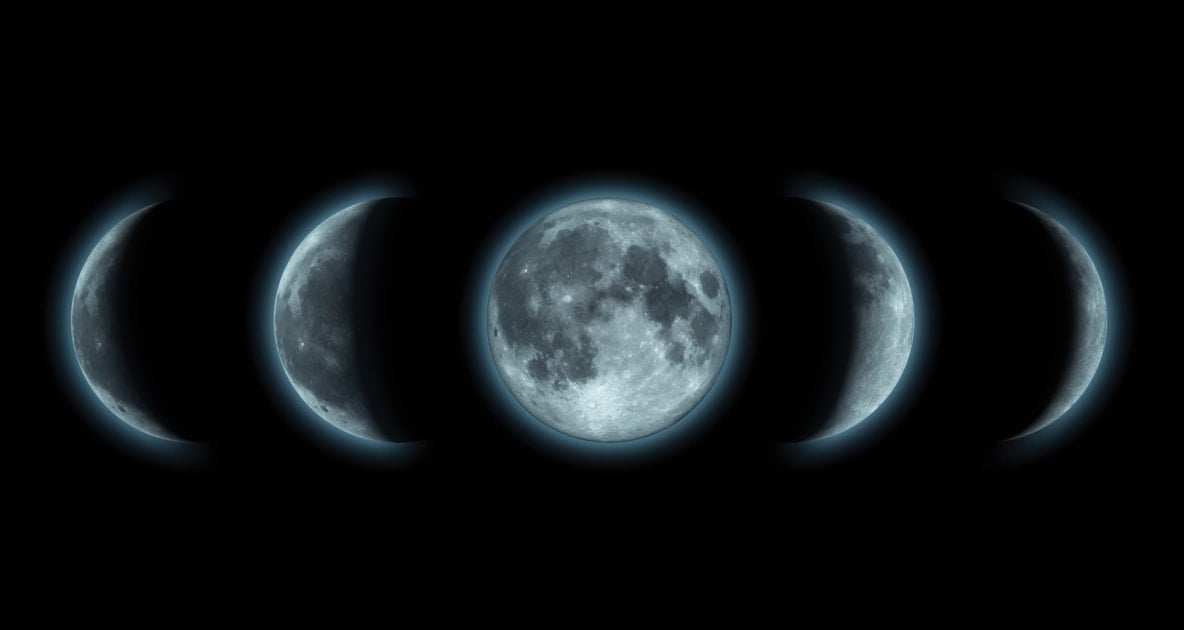Shining Light on the Phases of the Moon
What causes the Moon to shine differently from week to week? And why can you sometimes see the Moon during the day? We have the answers.

The first celestial object that attracts the attention of many people at a young age is the ever-changing Moon. The lunar surface appears to go through phases over the course of a month, but what causes it to shine differently from week to week? And why can you sometimes see the Moon during the day?
The Moon itself shines by reflecting sunlight. And other than the Sun, the Moon is far larger in angular size than any object in the sky. In fact, a full Moon is about 30 times larger and more than 1,300 times brighter than the planet Venus.
Tracking the Moon Around the Sky
The time it takes the Moon to go through its entire cycle of phases is 29.53 days, measured from one new Moon to the next. At the new Moon phase, from our Earthly perspective, the Moon is completely invisible. Why? It’s in the same part of the sky as the Sun. Hence, we never can see the new Moon (unless it is crossing directly in front of the Sun to cause an eclipse). Skywatchers call it a “new” Moon because it is the beginning of a new lunar cycle.
But the First Quarter phase (which appears as a half Moon) occurs when the lunar body completes the first quadrant of its phase cycle, about 7.4 days after new Moon. At this particular phase, the Moon rises six hours (or one-quarter of a day) after the Sun, generally around noon. We see it at its highest point in the southern sky at sunset, and it sets at around midnight.
The full Moon, which comes about 14.8 days after new Moon, is opposite to the Sun in the sky; its disk is completely bathed in sunlight. It rises at sunset, stands highest in the sky at midnight, and sets at sunrise.
The Last Quarter phase (also a half Moon) occurs when the Moon completes the third quadrant of its phase cycle, about 22.1 days after new Moon. At this particular phase, the Moon rises six hours (or one-quarter of a day) before the Sun, generally around midnight. We see it at its highest point in the southern sky at sunrise, and it sets around noon.
And between First Quarter and full Moon, and full Moon and Last Quarter, we see the Moon in its most-seen phase: the “gibbous” phase (from the Latin gibbus, meaning “hump”). Between First Quarter and its full phase, it can be seen rising in the afternoon—you’ve probably seen it coming home from work or school—and remaining in the sky until well past midnight. Between the full phase and Last Quarter phase, it rises in the late evening and remains in view until after sunrise. As you head outside on your way to work or school, you’ve probably seen this Moon high in the western sky daytime sky.
Some people wonder why they can see the Moon during the day and this is why—you will instantly know that it’s in the waning gibbous phase when you can see it in the morning.

Joe Rao
Joe Rao is an esteemed astronomer who writes for Space.com, Sky & Telescope, and Natural History Magazine. Mr. Rao is a regular contributor to the Farmers' Almanacand serves as an associate lecturer for the Hayden Planetarium in New York City.






I live on the Key Pennisula of the Puget Sound in Washington State … More than half the time when people can see all these wonderful sightings, we do not. How does that reflex our moods and gardens when we do not experience the wonders of the atmosphere?
That is how I plan to plant the garden